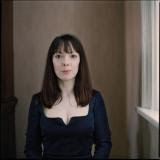Short of going through life with our eyes closed, we cannot avoid road signs, advertising, maps, artworks, posters, graffiti, television and computer screens. They all present us with images that are an integral part of our lives to a point where we decode them in a quasi-automatic manner. Yet, we have been trained to recognize and understand representations of all kinds. From the very moment we are presented with associations between pictograms and words as an early approach to learning vocabulary all the way to graduate academic disciplines such as art history and semiotics, we become unassuming experts of the visual. Maybe this widespread and inevitable familiarity with the visual explains the fact that there is no one discipline that can pretend to encompass all that constitutes "the visual". Or is there?
With The Study of the Visual After the Cultural Turn, Margaret Dikovitskaya aims to demonstrate that Visual Studies have emerged in American academia as the ultimate distinct field for the study of visual culture over the last decades. This is no small task considering that, although this interdisciplinary area of research splicing various aspects of anthropology, art history, film studies, linguistics and comparative literature has existed since the 1980s, it has yet to be the object of a consensus regarding its objectives, definitions and methods. What's more, its applications vary from one institution to the other and, in spite of a growing number of adepts, it is still more often than not aggregated to aesthetics or cultural studies.
The author, far from being deterred by this state of affairs, sees these discrepancies as an incentive to develop a common ground for working in the field of the visual. To be exact, Dikovitskaya aspires to shed new light on this area of study by looking at the way in which an intersection of art history and cultural studies has generated new ways to consider the visual. Her starting point is the hypothesis according to which deconstructionist criticism is responsible for a cultural turn that has helped redefine the status of culture. Where cultural phenomenon was previously seen as the mere response to social, political and economic processes, it has now come to be perceived as their cause.
In order to get the lay of this as yet unexplored theoretical land, the author embarked on an extensive series of interviews of faculty members attached to various American universities. Among the academics who have collaborated to the project, some are established authorities such as Douglas Crimp, Anne Friedberg, Nicholas Mirzoeff. In order to get a range of theoretical standpoints, the academics were divided into three representative clusters: those who believe visual studies to be an appropriate extension of art history, the proponents of a new focus independent of art history but related to digital and virtual technologies and those who view visual studies as a threat to art history. Considering that an academic field is defined by the object of study, the basic assumptions underpinning the methodology and the history of the discipline itself, it comes as no surprise that the author should consider this epistemological effort as a pioneering attempt to present a historiographic account.
The structure of the book is quite straightforward: an introduction followed by a bibliographical essay, two chapters, a conclusion and a substantial appendix. The introductory bibliographic essay retraces all American publications pertaining to visual culture and provides succinct analyses of each tome's specific contribution. If this first part of the book reads more like an attempt to gather the preliminary material from which an analysis could eventually be derived, the second part provides some insight into the turn that seems to have brought about this new field as well as concerns regarding potential theoretical frameworks. This chapter aims to determine what the potential objects and methodologies of this emerging discipline could be, but the focus remains on art history, its methods and its objects of study. Indeed, the resulting concluding remarks serve the purpose of asserting the importance of visual studies by suggesting that they have come to subsume art history: "Given that visual studies treat all images as worthy of investigation and implicated in relations of power and history, from the perspective of proponents of the new field, art history is encompassed by visual studies and becomes, in effect, part of this new field's own history."
For all the material gathered, Dikovitskaya is left with a comparatively flimsy conclusion: visual culture is in the making. Pointing more to the need to redefine art history on the basis of new objects of study -- such as virtual reality and video art -- than to the legitimacy of a brand new field of research, this book still has the merit of being an exhaustive account of the various forms of engagement with visual culture. The collection of interviews alone is of great interest for any graduate student concerned with visual studies and its potential objects. It is also likely to be of interest for academics involved in researching and teaching such matters as it is an informed point of view on the way disciplines have the potential to evolve.


